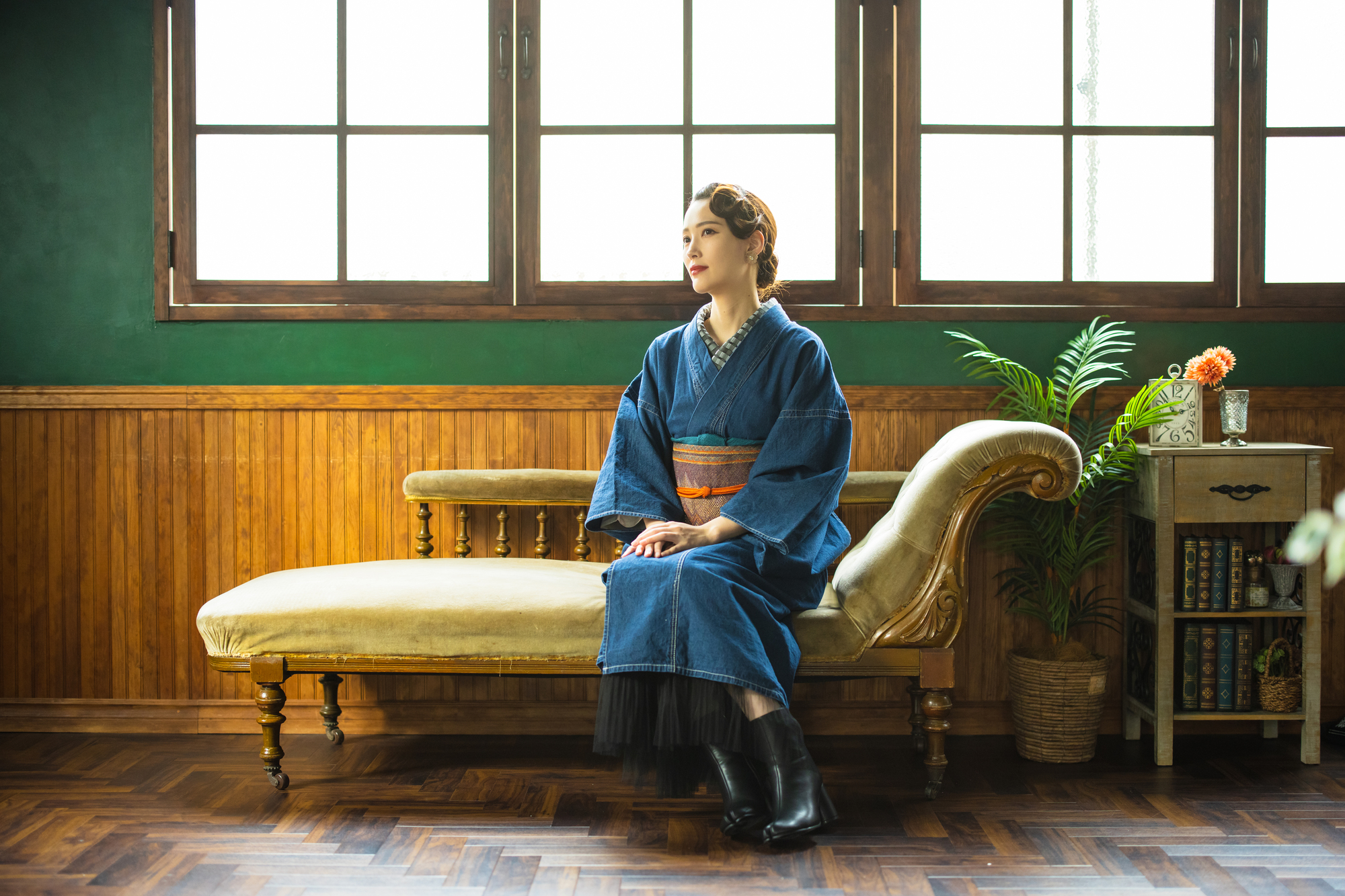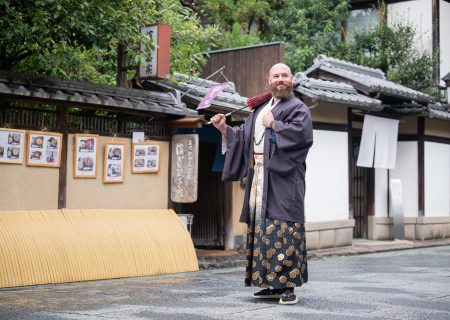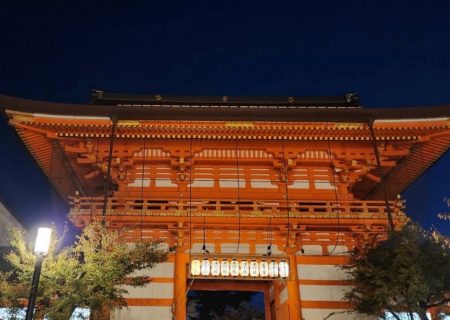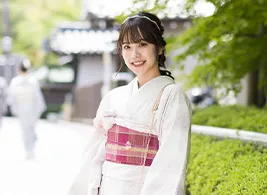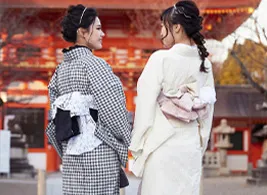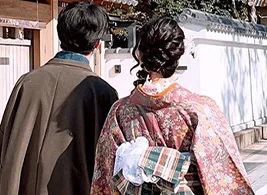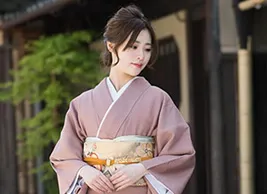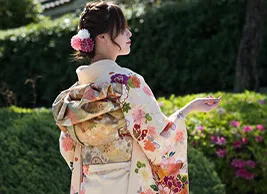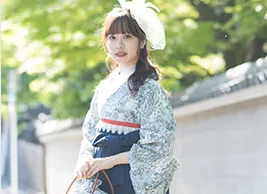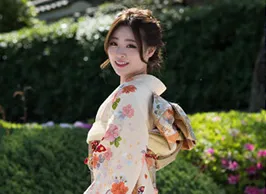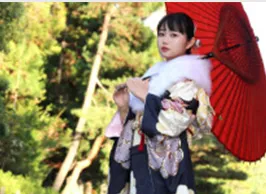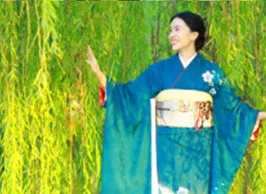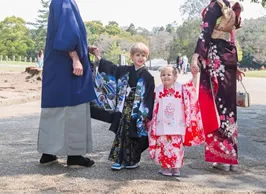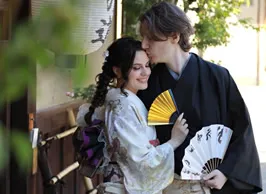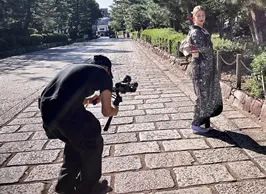What do you think of when you hear the term “Taisho Roman”?
I’m sure you have various images of him, such as “Yumeji Takeshita, the painter?” “It looks like bricks,” and “It’s luxurious and gorgeous!”
All of those images are correct! This is because “Taisho Roman” has no formal definition and is based on free culture and ways of thinking.
The Taisho era was a very glamorous era, with the introduction of foreign cultures and the spread of flexible ways of thinking about fashion, and the enjoyment of patterns and colors that were not bound by rules.
This time, we will look back at the history of kimonos and introduce ways to enjoy Taisho Roman-style kimonos.
Index
- 1 [Basic knowledge] What is the history and origin of kimono?
- 1.1 The origin of kimono dates back to the Yayoi period
- 1.2 Kimono style developed from the Nara period to the Heian period
- 1.3 Kimono became fashionable especially for women from the Kamakura period to the Edo period
- 1.4 From the Meiji period, kimono became more familiar
- 1.5 Nowadays, there are many kimonos that are easy to wear
- 2 [Understanding the Taisho Era] Free and diverse culture! Introducing the events and entertainment of the time
- 2.1 Increase in the number of office workers, spread of Western-style products and services
- 2.2 Liberal and democratic ideas represented by Taisho democracy
- 2.3 Development of popular entertainment such as plays and vaudeville
- 2.4 The art styles of “Art Nouveau” and “Art Deco” were introduced to Japan
- 2.5 In the free era of the Taisho era, the way of enjoying kimono also changed
- 3 What is the image that makes you think, “This is Taisho romance!”?
- 4 Kimono ideas to enjoy Taisho romance
- 5 Enjoy Taisho romance at a rental kimono shop in Kyoto
[Basic knowledge] What is the history and origin of kimono?
First, let’s check the origin and history of the kimono.
The origin of kimono dates back to the Yayoi period
There are various theories about the origin of the kimono, but it is said that the kimono first came to be known as kimono from the “Kure no Kuni” in southern China in the mid-3rd century.
Therefore, the origin of Japanese kimono can be said to be from the Yayoi period. During the Yayoi period, “kanpui” and “kantoi,” which were single pieces of cloth wrapped around the body, were popular as everyday wear.
Kimono style developed from the Nara period to the Heian period
Through the ingenuity of the Japanese people, kimono underwent a unique evolution from the Nara period to the Heian period.
The aristocratic class of the Nara period wore clothes with small cuffs called “kosode” under their layered clothing. In addition, kosode was used by working-class people not as layered clothing, but as everyday wear.
During the Heian period, the culture of layered clothing developed as a means of expressing the high status of the nobility. The Juni-Hitoe, which consists of many layers of large sleeves, is also one of the symbols of the Heian period.
Kimono became fashionable especially for women from the Kamakura period to the Edo period
The word “kimono” was finally coined during the Kamakura and Muromachi periods. As the era changed to a samurai society, clothes that were easy to move in came to be preferred. Women seemed to be enjoying fashion by wearing elegant uchikake and other clothing.
During the Edo period, townspeople gained power and men’s clothing became fixed in order to go outside. However, although it differed depending on their status, women did not go out much and supported the family and society, so they were able to enjoy a wide range of kimono options.
From the Meiji period, kimono became more familiar
After the Meiji Restoration, due to the creation of a new nation based on the equality of the four peoples and the development of the silk industry such as the Tomioka Silk Mill, kimonos became popular among a wide range of people.
During the Taisho period, foreign cultures were imported and kimono styles that blended Japanese and Western styles spread.
Although life continued to be difficult due to World War II, the kimono became a treasured item that was passed down from generation to generation.
Nowadays, there are many kimonos that are easy to wear
Living in the Reiwa era, we can flexibly incorporate kimono into our lives.
Even in today’s world where Western clothing has become mainstream, there are still many opportunities to wear a kimono, from everyday outings to ceremonial occasions.
To be honest, up until the Showa era and early Heisei era, many people probably avoided wearing kimono because they felt that there were strict rules.
However, now that the era name has changed to Reiwa, there are many kimono dressing classes and kimono rental shops that you can easily go to, making it easier to enjoy the kimono life without being bound by the rules.
In addition, many items have been developed that are easy to adjust to suit your body shape and convenient items that are not uncomfortable to wear.
If you haven’t worn a kimono for a while, please take this opportunity to try it again.
[Understanding the Taisho Era] Free and diverse culture! Introducing the events and entertainment of the time
In order to imagine how to wear Taisho Roman kimonos, it is important to analyze the Taisho era from every perspective.
The Taisho era lasted only 15 years, from 1912 to 1926, but it was also a gorgeous era in which popular culture rapidly developed.
Increase in the number of office workers, spread of Western-style products and services
The Taisho era was also a time when Japanese people had confidence in their country due to their two victories in the Sino-Japanese and Russo-Japanese wars.
During the Meiji period, under the influence of the developed countries of Western Europe, industrialization progressed significantly and economic development was achieved.
As a result, a consumer society was promoted, with the number of office workers increasing and new department stores opening.
Liberal and democratic ideas represented by Taisho democracy
The movement for freedom and equality called “Taisho democracy” is also representative.
A new way of thinking based on liberalism and democracy emerged from the previously feudal society, and various movements calling for the improvement of the status of women and the elimination of all forms of discrimination arose, marking a major turning point in the times.
Development of popular entertainment such as plays and vaudeville
“Activity photos (movies)” and “Songs and Dances” became popular as entertainment for the masses.
It is also said that the Mitsukoshi Department Store Boys’ Band and the Takarazuka Choir (later the Takarazuka Girls’ Revue) were born during the Taisho era.
The art styles of “Art Nouveau” and “Art Deco” were introduced to Japan
The decorative styles “Art Nouveau” and “Art Deco” originated in Paris, France, and were introduced to Japan through the Paris World’s Fair.
These art styles are also prominently reflected in the patterns and colors of Taisho Roman kimonos.
In the free era of the Taisho era, the way of enjoying kimono also changed
Although the Taisho era was a short period of 15 years, it was a turbulent time that not only saw economic and entertainment development, but also sad events such as the Great Kanto Earthquake.
On the other hand, it was also a new era based on liberalism, and people were vibrant and absorbed much of Western culture, greatly expanding the ways to enjoy kimono.
As a romantic era filled with emotion, Taisho Romance continues to have an appeal even today, attracting many people.
What is the image that makes you think, “This is Taisho romance!”?
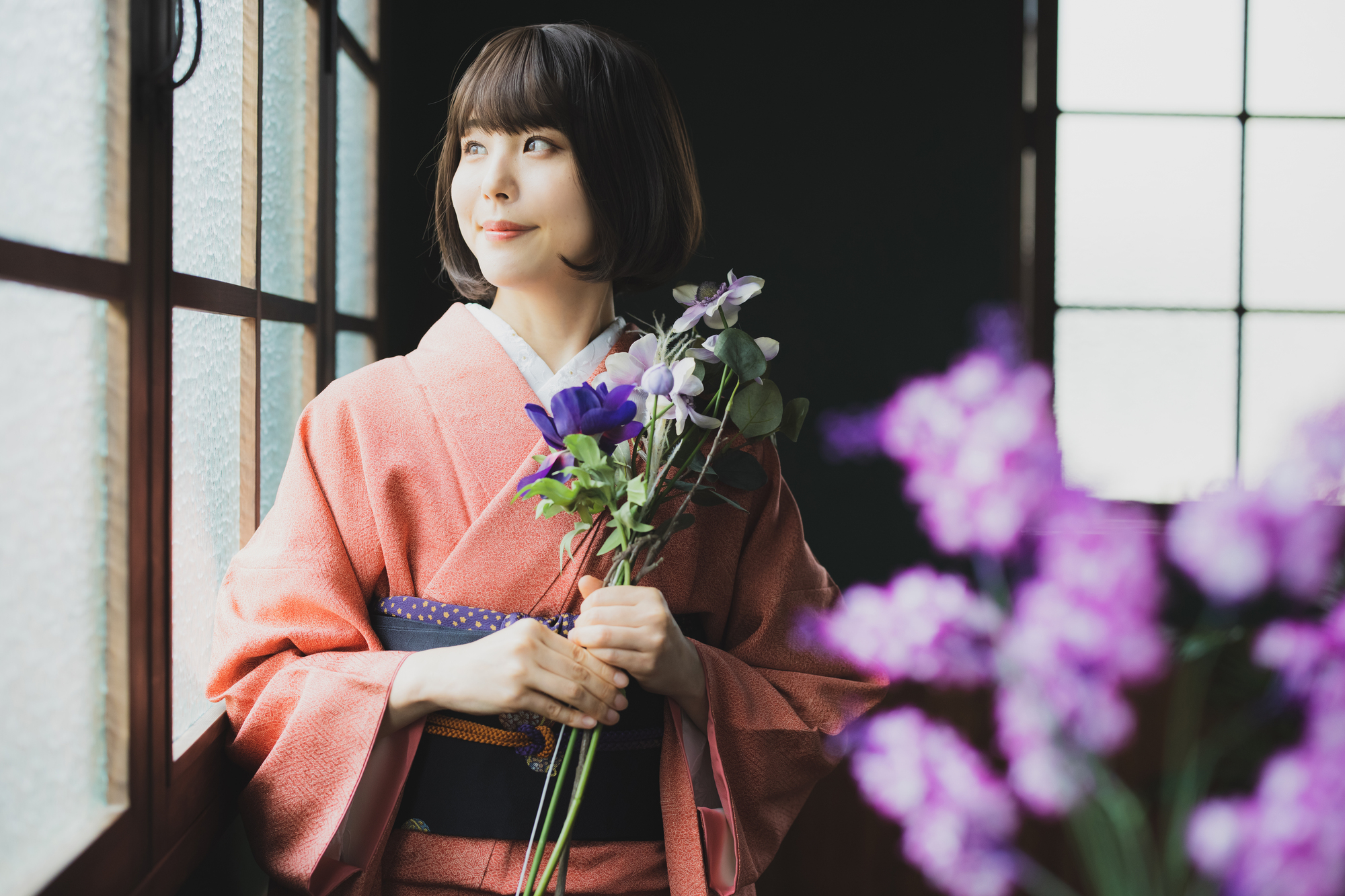
We have compiled a list of fashion and color schemes associated with Taisho Romance. Please use this as a reference for your kimono style!
Taisho Roman fashion image
Taisho Roman style kimonos are typically characterized by Western floral patterns such as roses and tulips, Art Deco-style patterns, and bold color combinations.
The characteristics of “Art Nouveau” and “Art Deco” mentioned earlier can be summarized as follows.
- Art Nouveau: Born in Europe around 1900. It is characterized by natural motifs such as women, insects, and flowers, as well as delicate and free curves. Painter Alphonse Mucha’s “Poster in Praise of Sarah Bernard,” etc.
- Art Deco: Born in Europe around 1910. It is characterized by its geometric and modern depiction using straight lines and curves. Craftsman Rene Lalique’s “The Goddess of Victory,” etc.
These art styles are also reflected in the designs of kimonos and obi.
Taisho Roman color scheme image
Taisho Roman color schemes include brick-like reds and oranges, deep greens, blues, and purples.
Choosing a dull, low-brightness color can create a Taisho era-like feel.
In Adobe ColorSearch for “Taisho Roman” and you may be more likely to get a color image.
Kimono ideas to enjoy Taisho romance
In order to express the Taisho romance to the fullest through kimono, we recommend finding an idea that you want to try out from among the many Taisho period images.
We have summarized accessories, hairstyles, etc. in bullet points so that you can easily pick up items that suit your tastes.
Don’t be bound by existing rules and enjoy new coordination with free ideas typical of the Taisho era!
Fabric pattern/material ideas
- Flower pattern in retro tones
- Geometric pattern
- Checkered pattern
- Checkered pattern
- Ribbon pattern
- Large peonies, roses, sweet peas, and tulips
- Antique kimono with red lining
Decoration ideas
- Lace gloves
- Lace tabi
- Lace obiage
- Lace collar
- Red or black collar
- Leather bag
- Leather thong
- Leather belt
- Leather headband
- Retro color obi tightening
- Camellia obi clasp
- Large red ribbon
- Necklace
- Beret
- Pearl headband
- Pearl earrings
- Flashy scarf
- Enamel bag
- Half collar with pattern
Hairstyle ideas
- Hidden ear style
- Finger wave style
- Half up
- Braiding
- Bob style
Taisho Roman style coordination can be done in a variety of ways depending on the person thinking about it and the person wearing it. However, if you only have the fashion items you have, your range of fashion may be limited.
In such cases, we recommend using a rental kimono store!
If you make good use of rental kimono shops, you can enjoy your ideal Taisho Roman style coordination without compromise.
Enjoy Taisho romance at a rental kimono shop in Kyoto
We have introduced the historical background of kimono, the events of the Taisho era, and the image of Taisho romance.
Although the Taisho era was fleeting, it was also a gorgeous and vibrant era.
In order to embody the Taisho Roman style in kimono, it is essential to have a spirit of freely enjoying fashion and an attitude of trying new colors and patterns!
If you come to Kyoto, please contact the rental kimono store Waplus Kyoto.
If you tell us, “I want to create a Taisho Roman style!”, a professional coordinator will carefully guide you.
Click here for reservations and inquiries
Tag
Author of this article
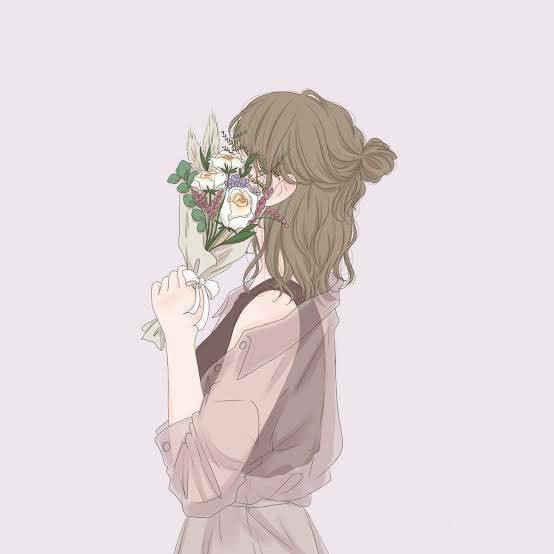
Waplus Yasaka Shrine store staff
Ayana Ogawa
We would like to help many customers smile through kimono rental.
I love spending time listening to customer requests and proposing kimono coordination and deciding on hair styles!
I am particularly good at hair styling, so please leave it to me to create the currently popular feminine hair.
I'll make it look cute!
My hobbies are music, movies, and shopping!
Please come and visit Waplus Kyoto!
We will suggest cute coordination!


